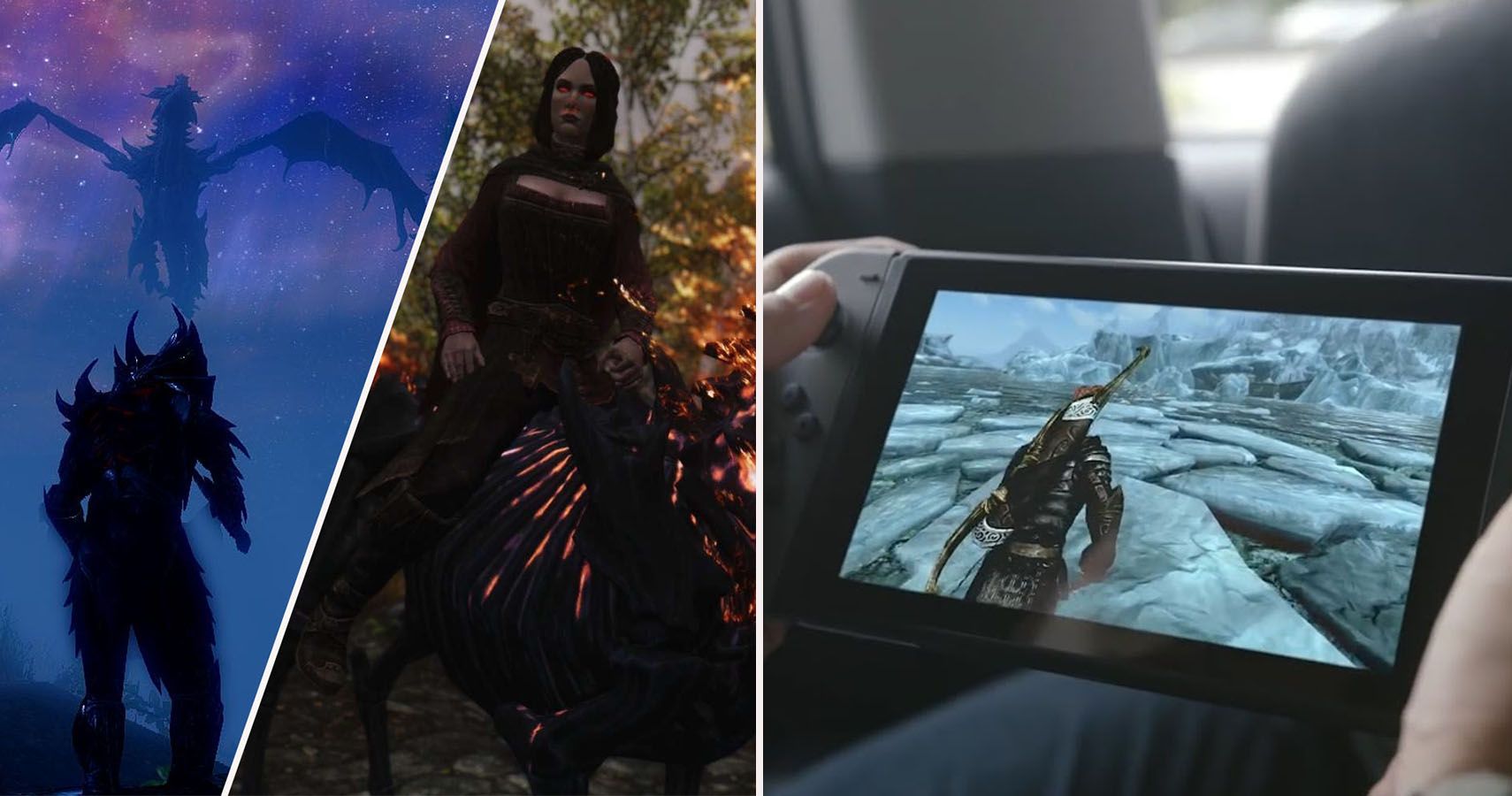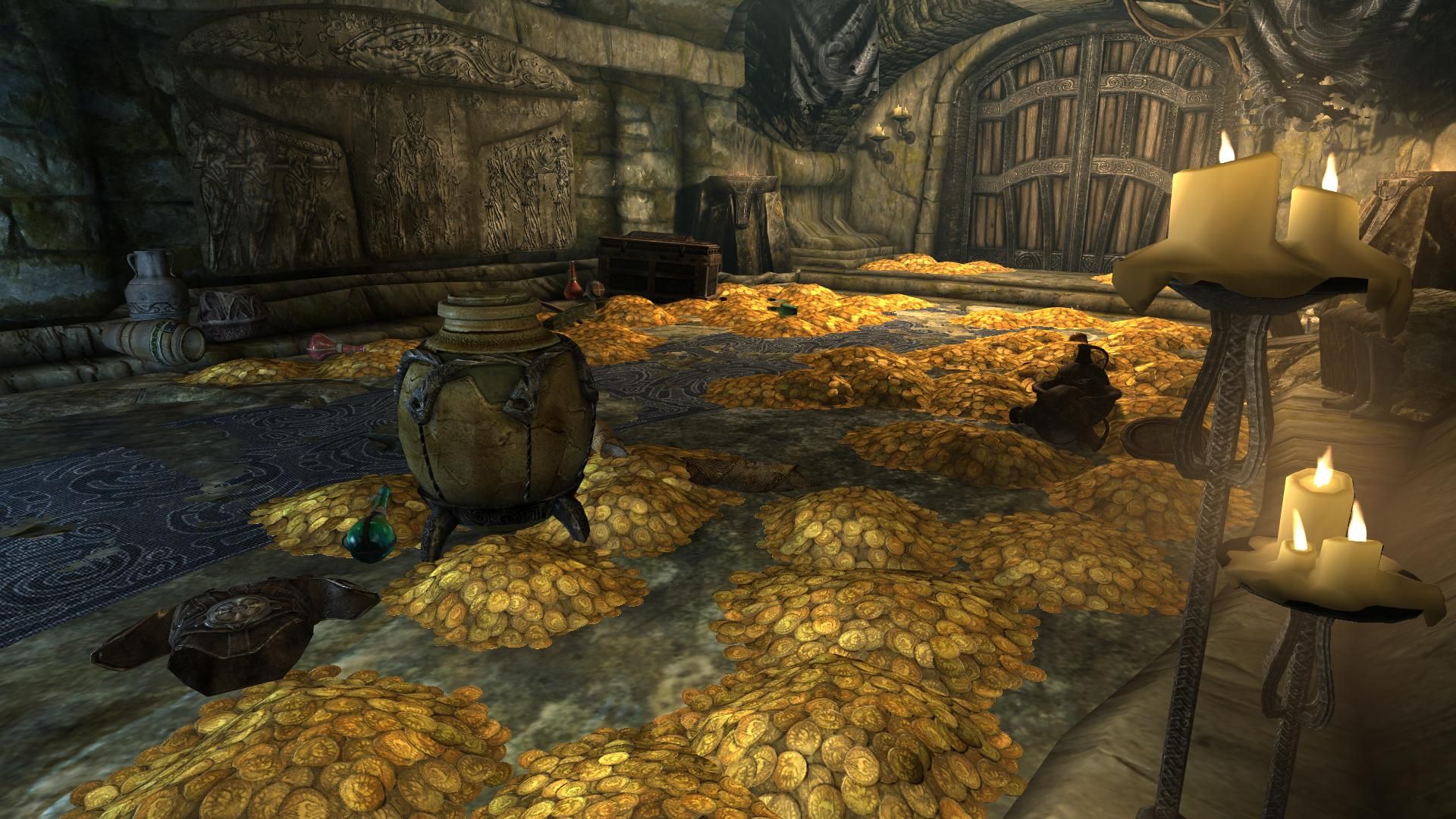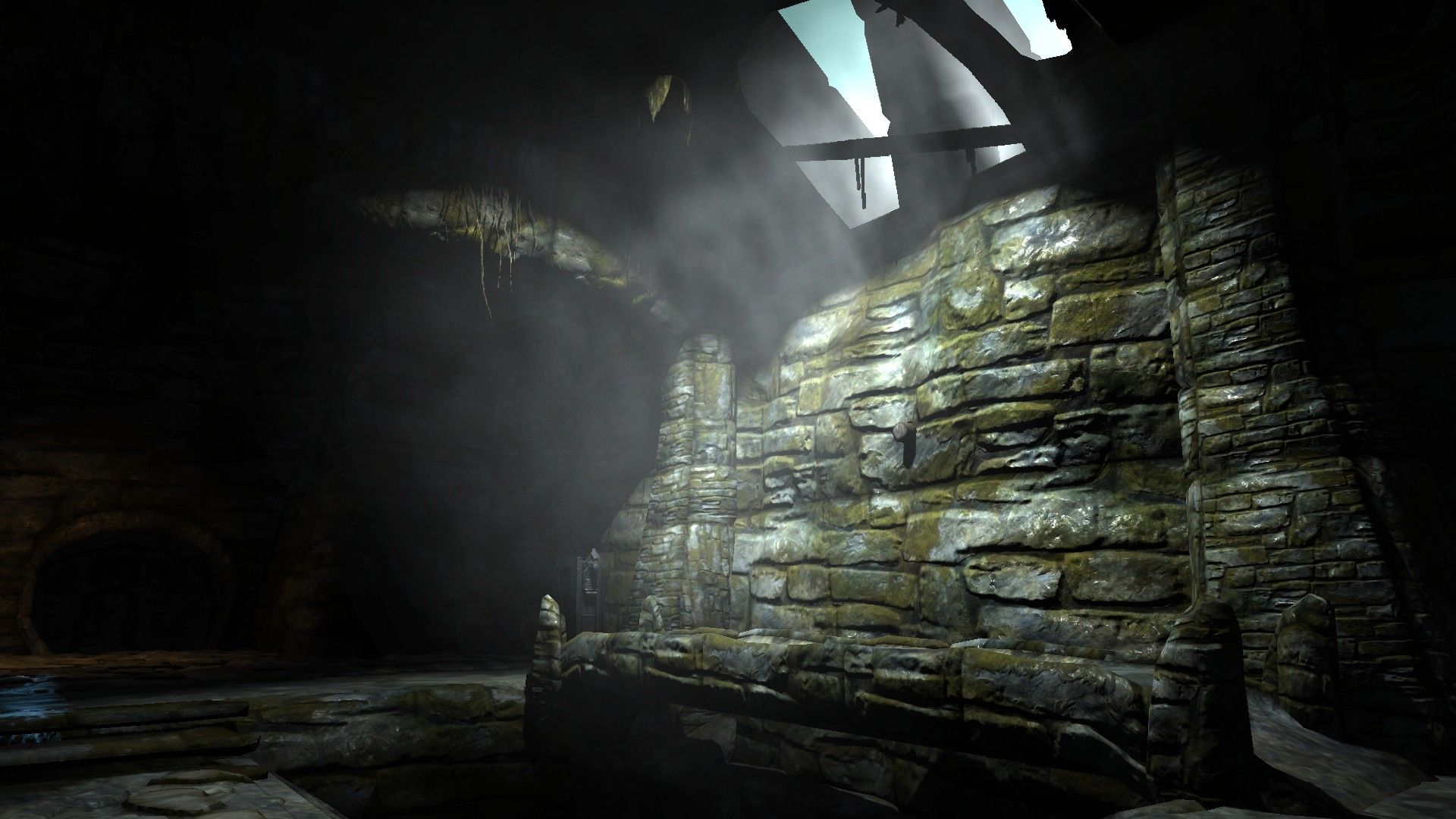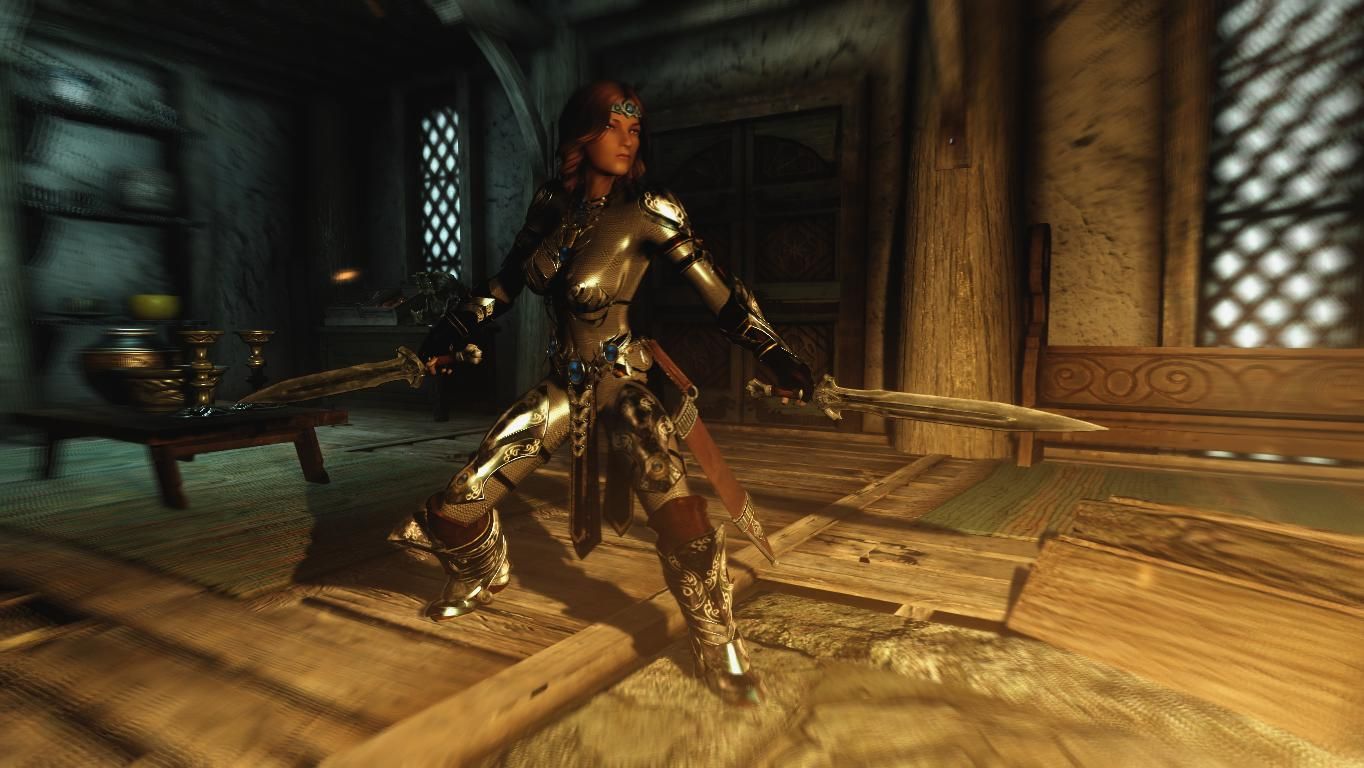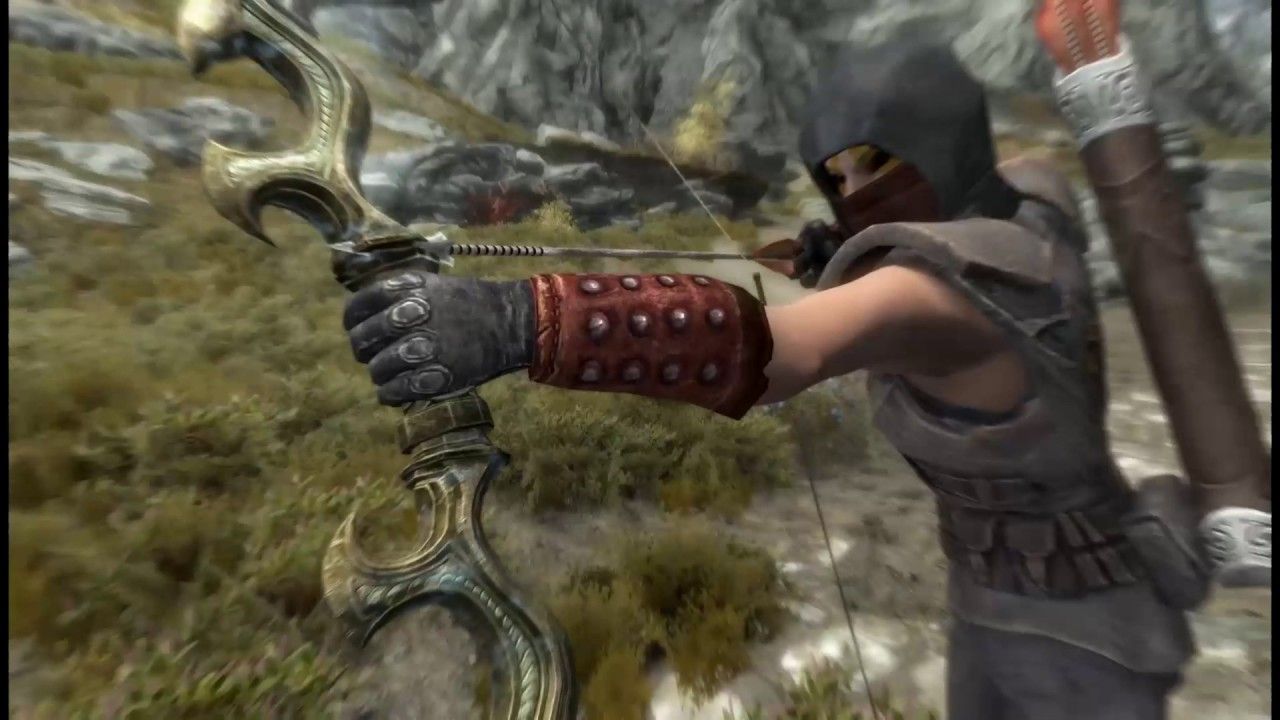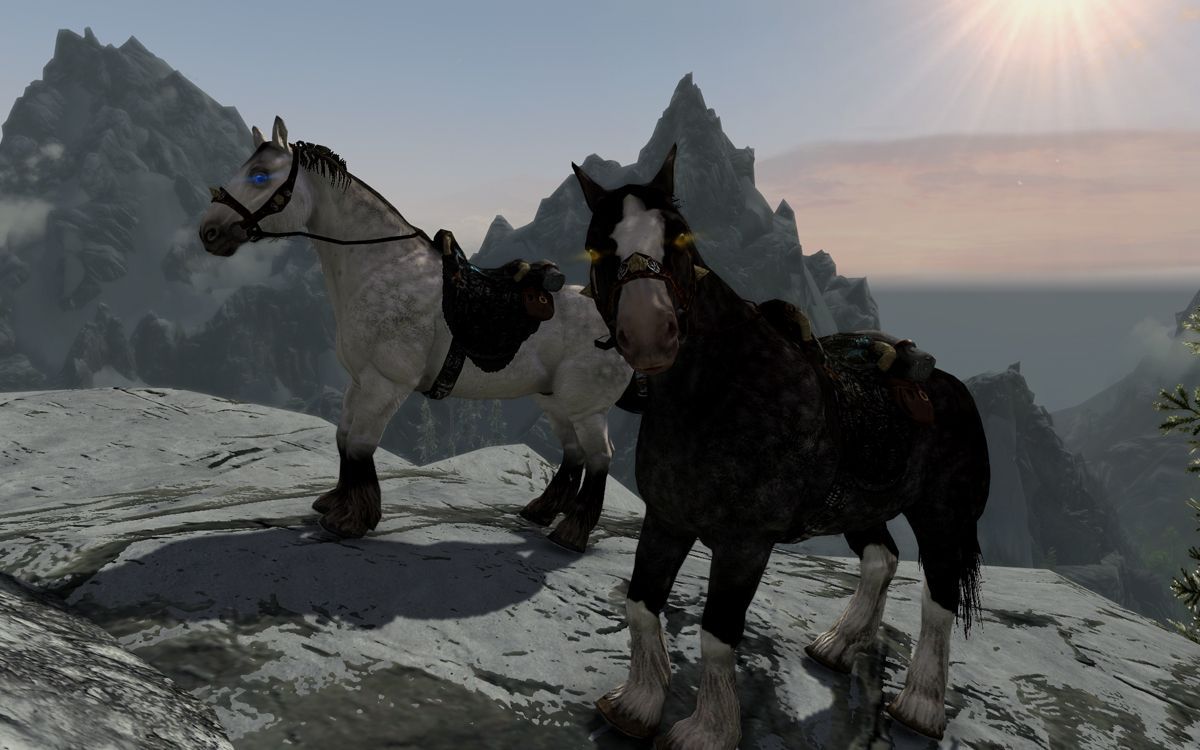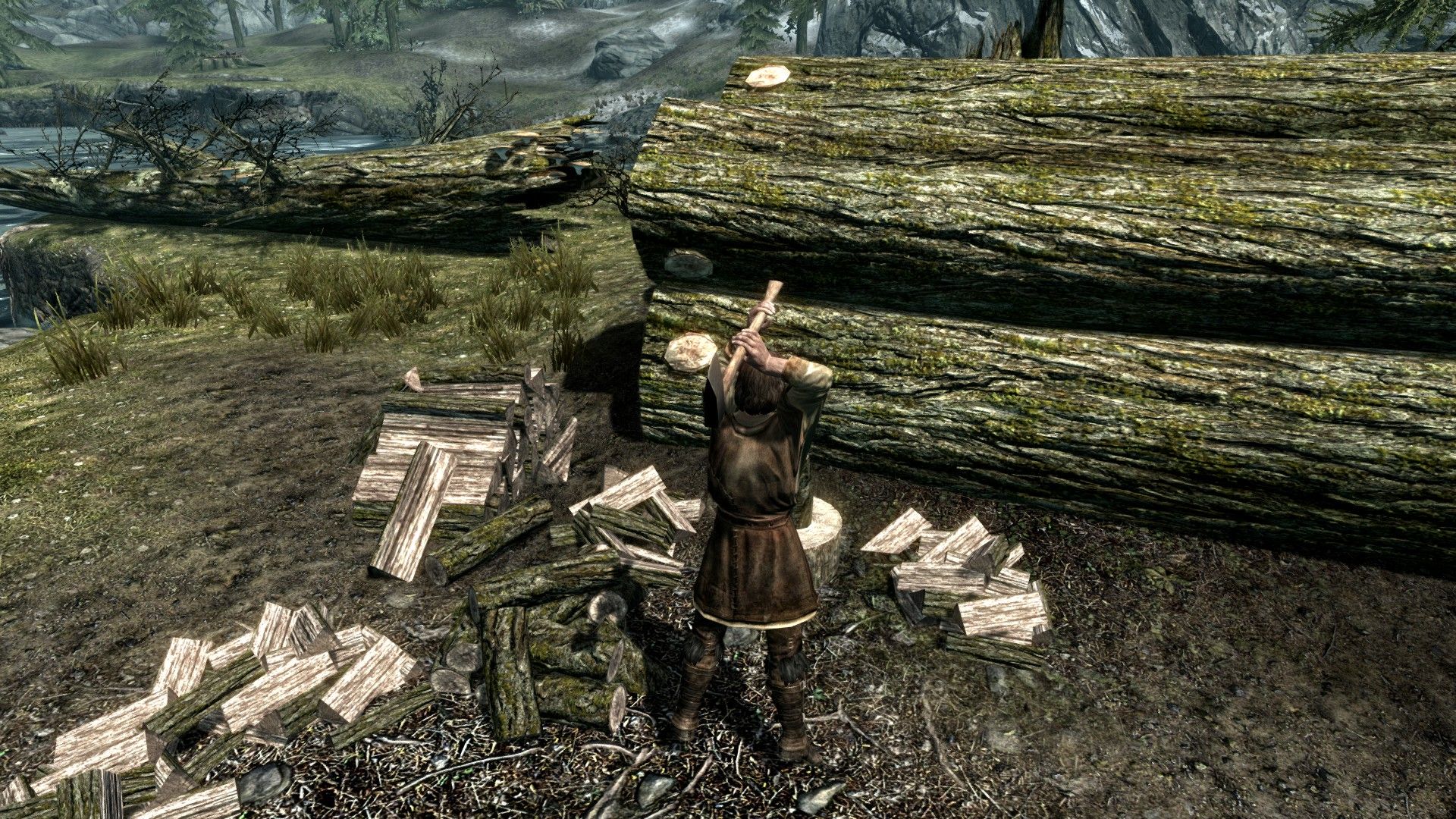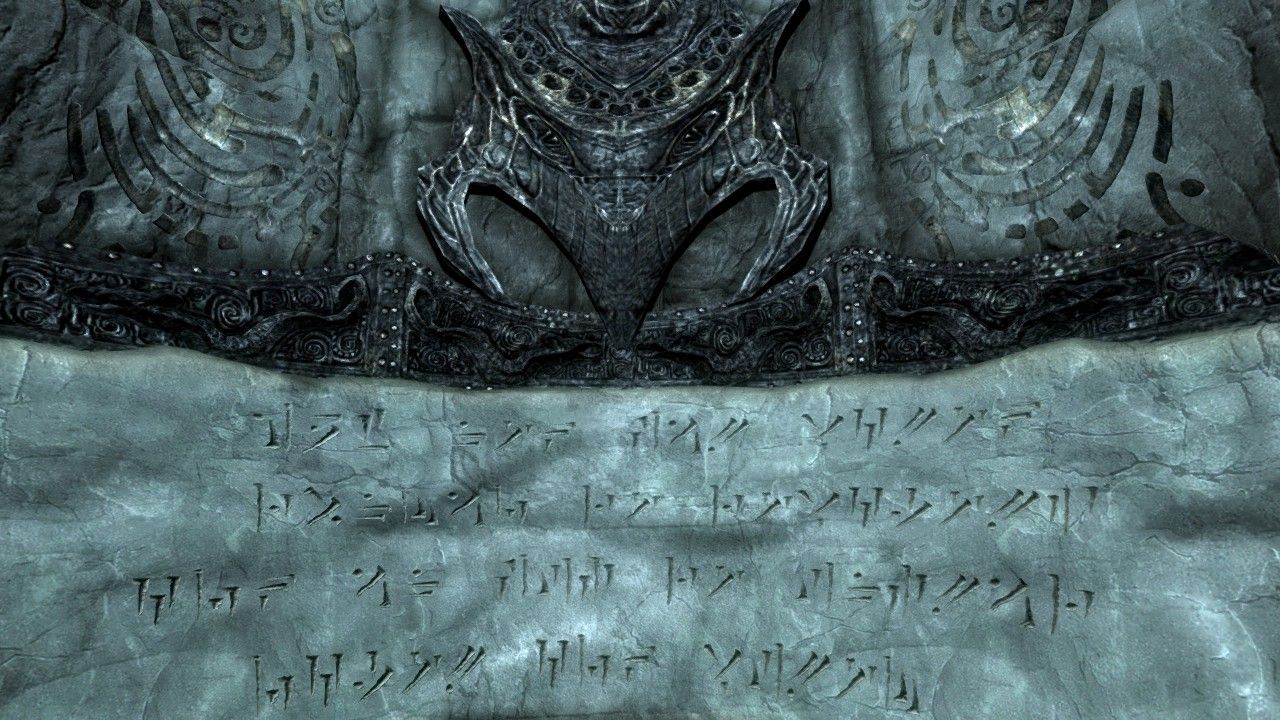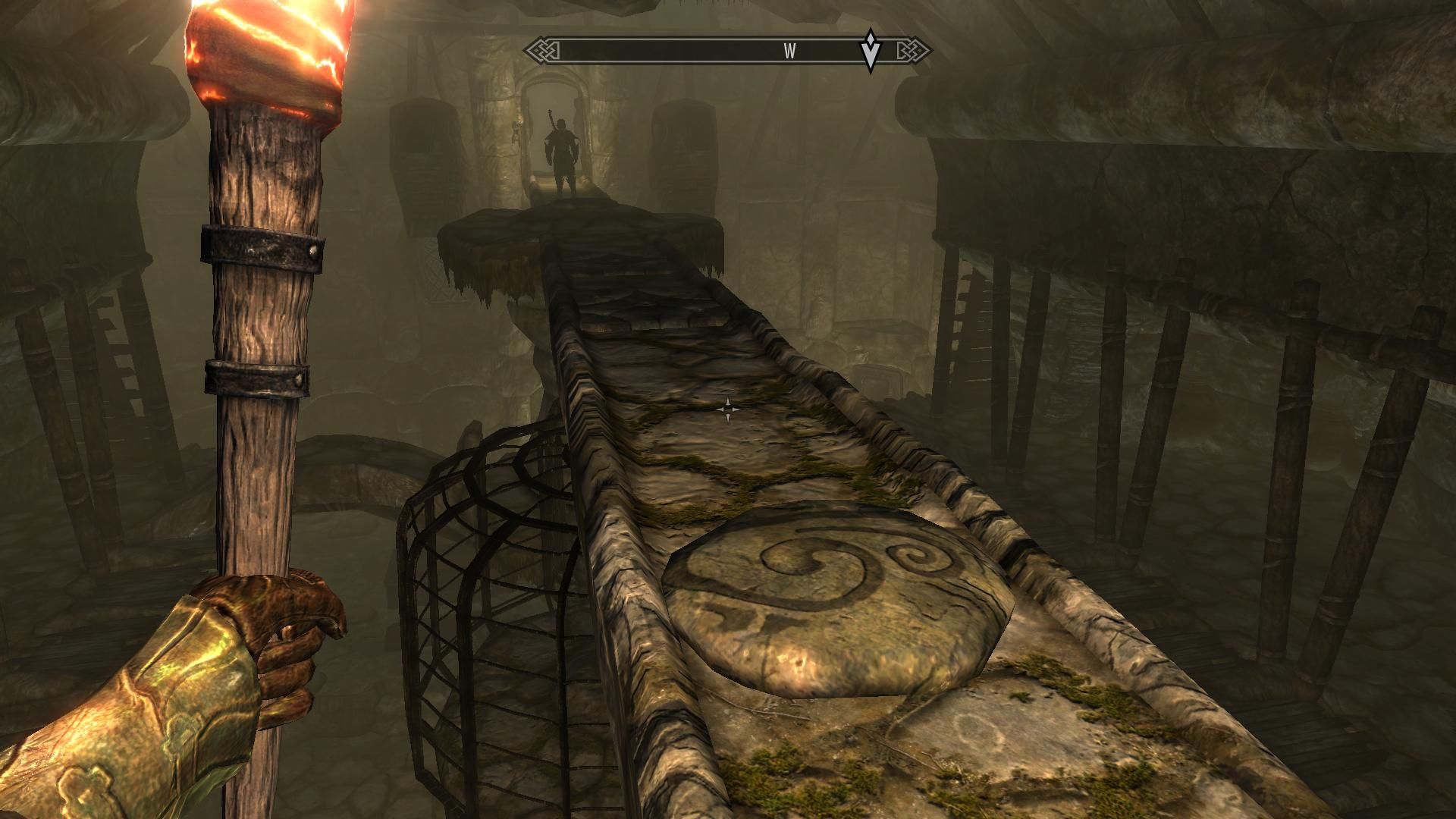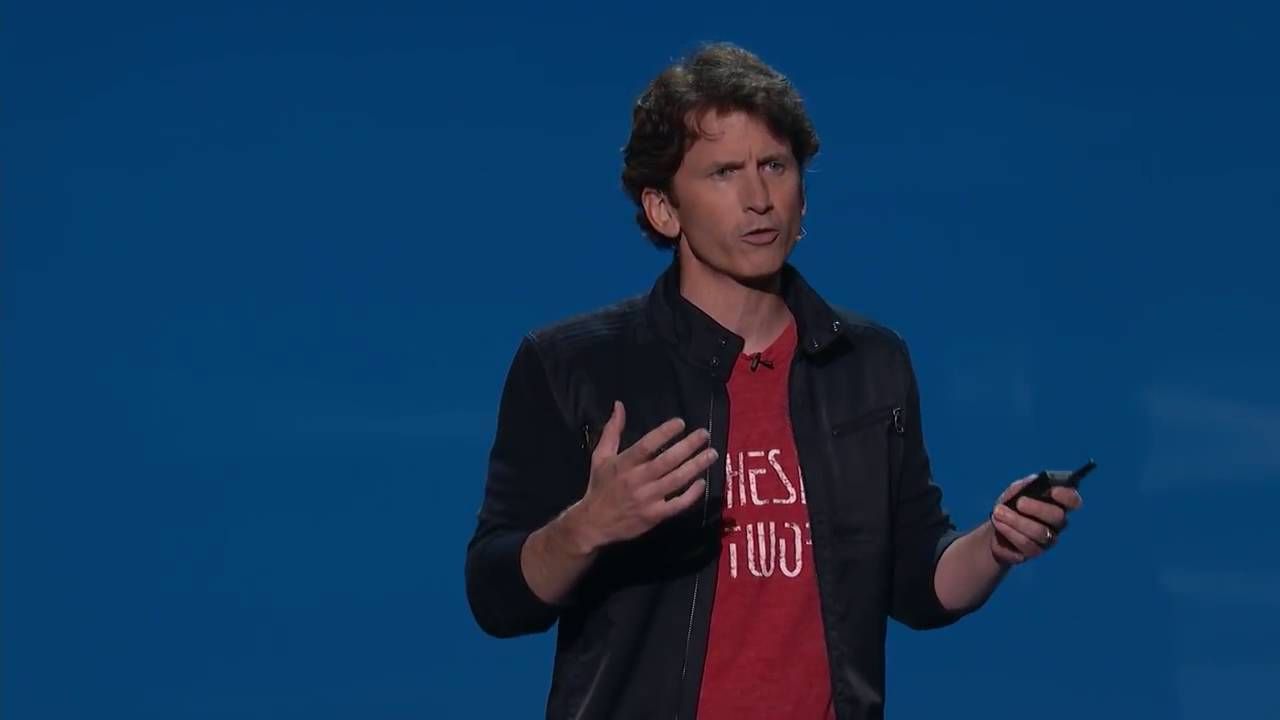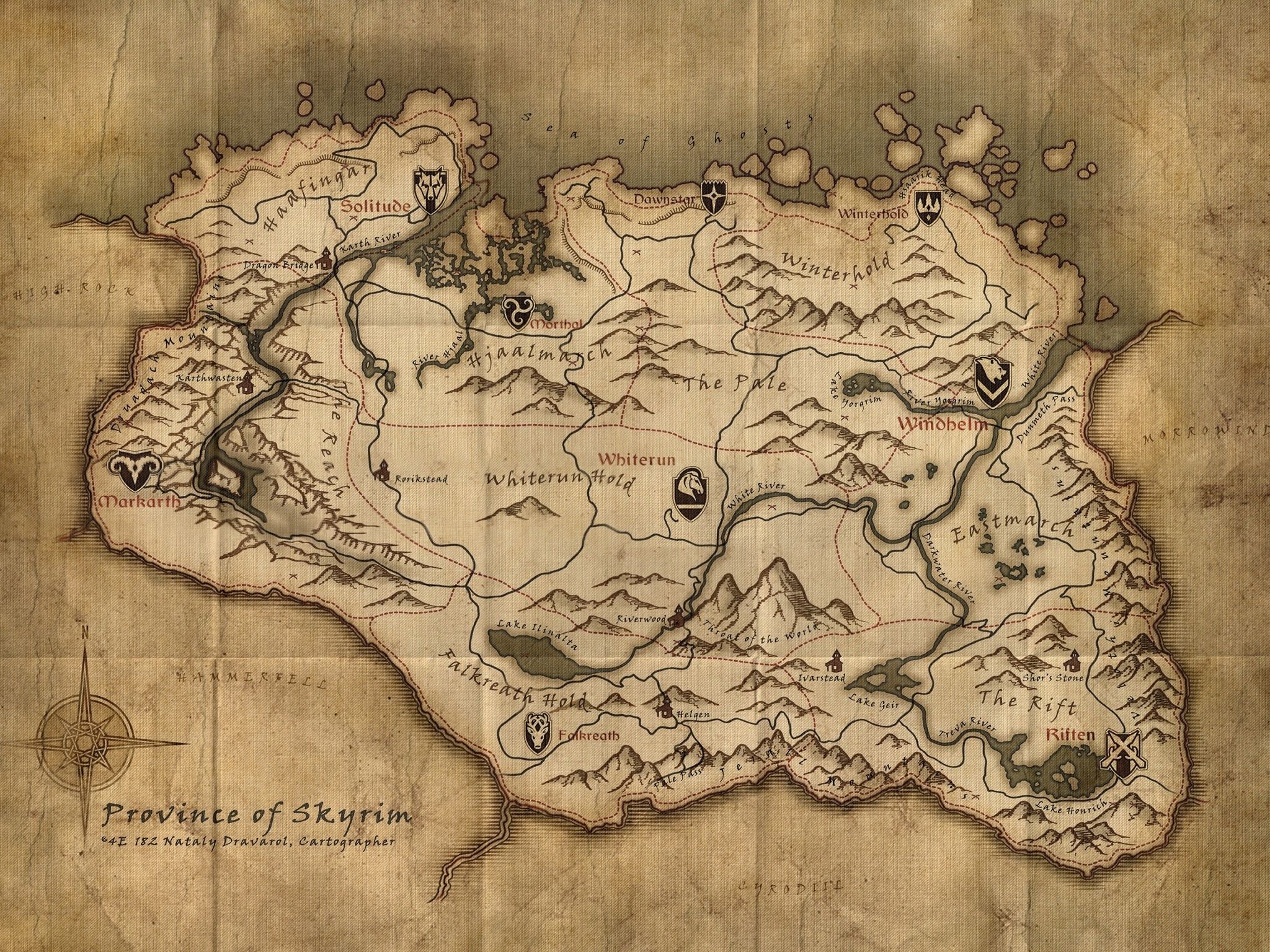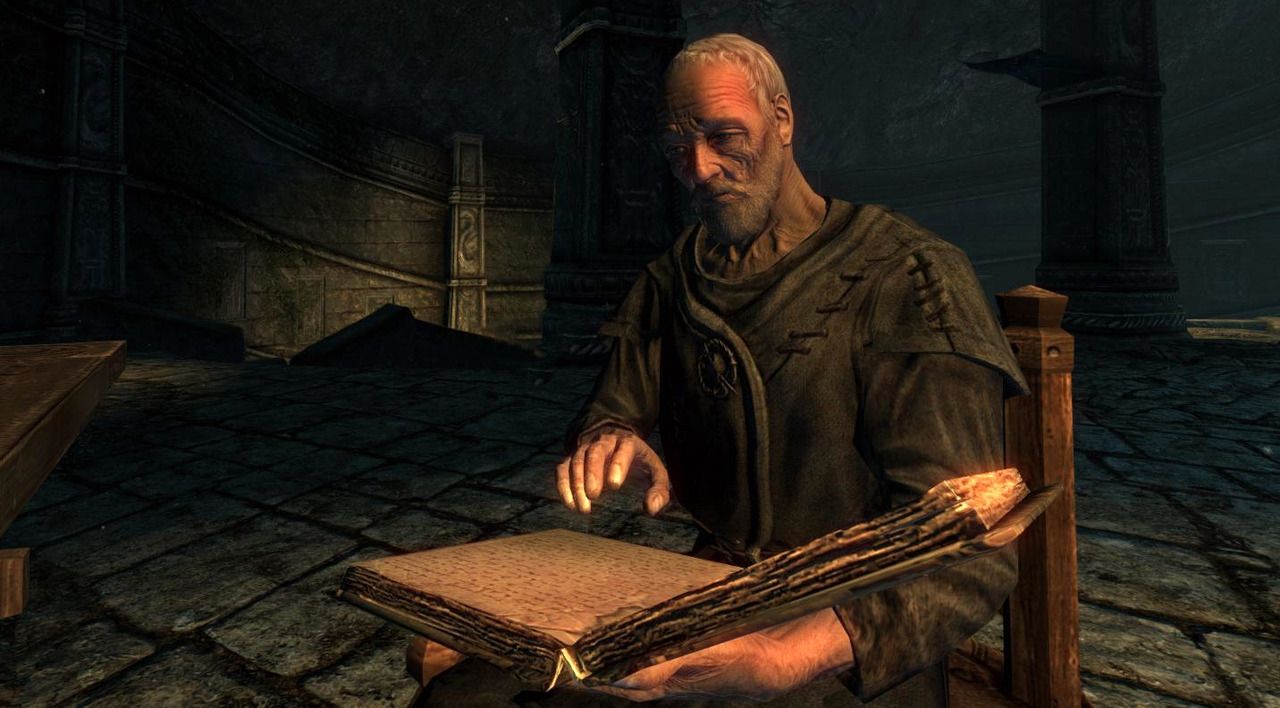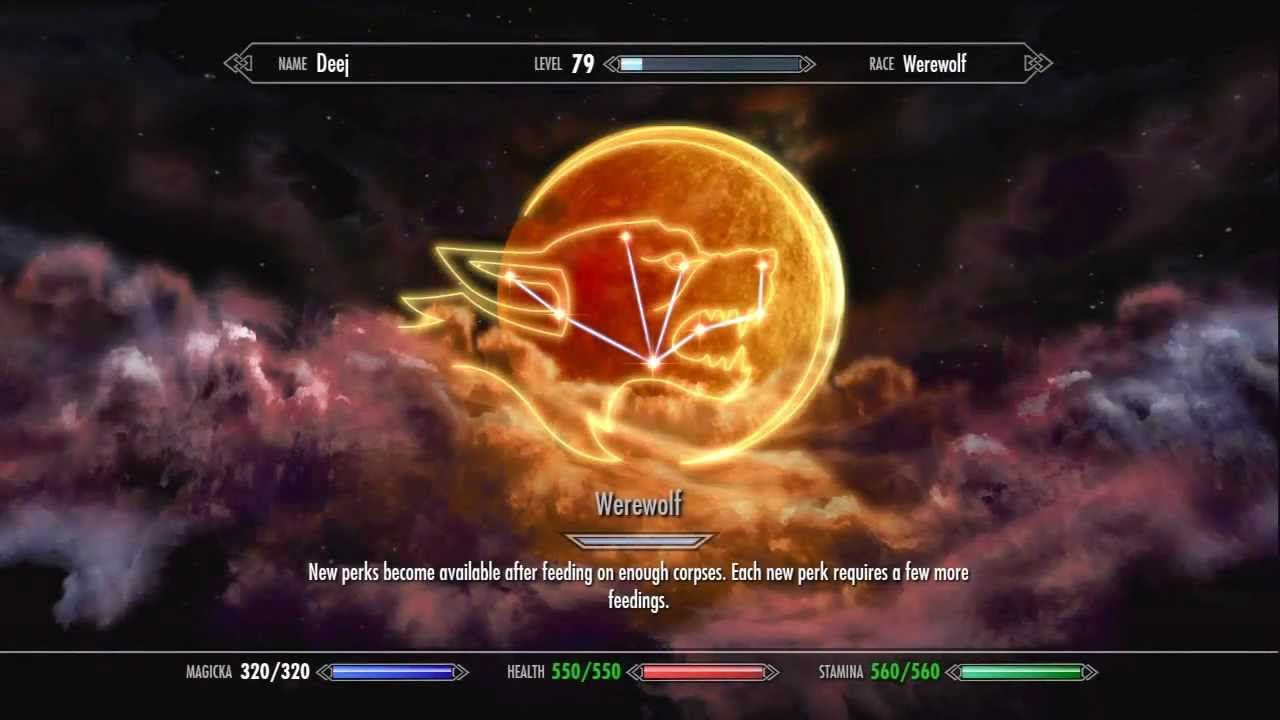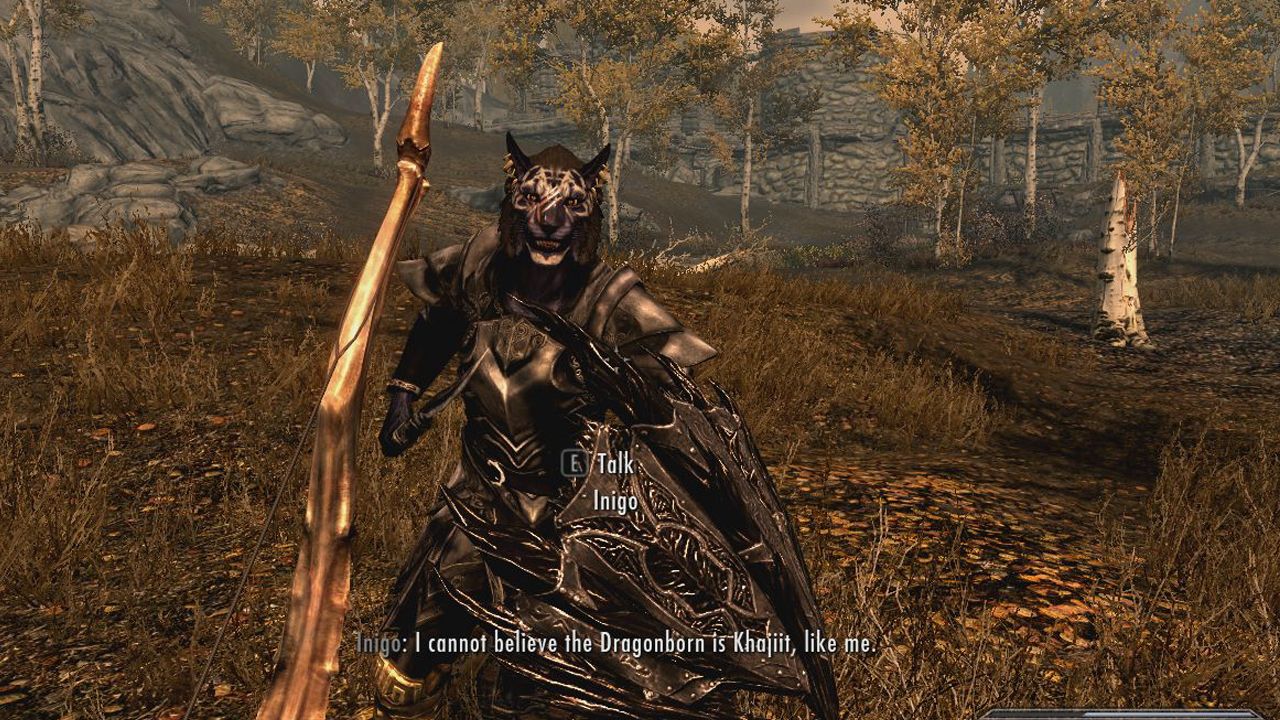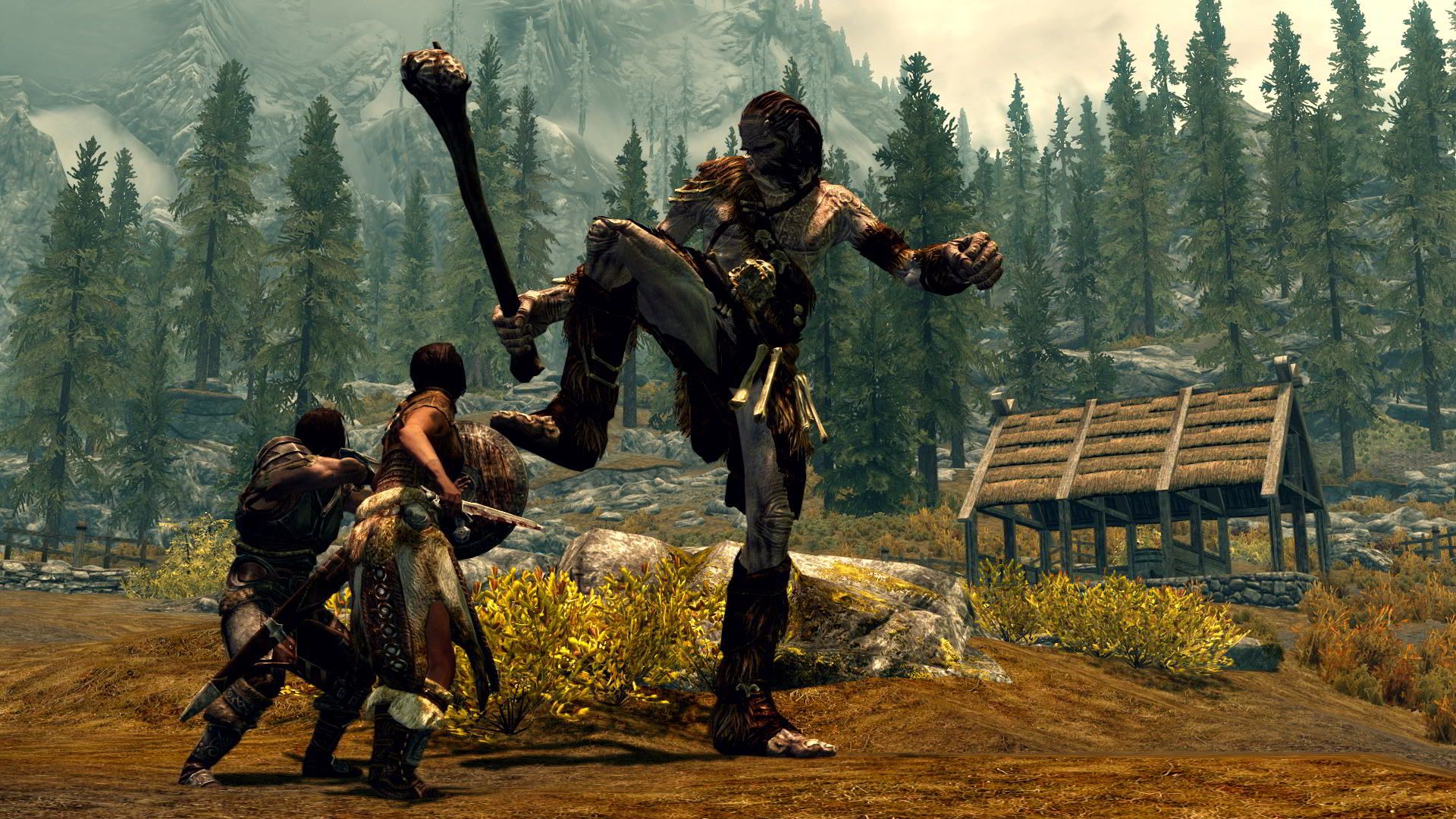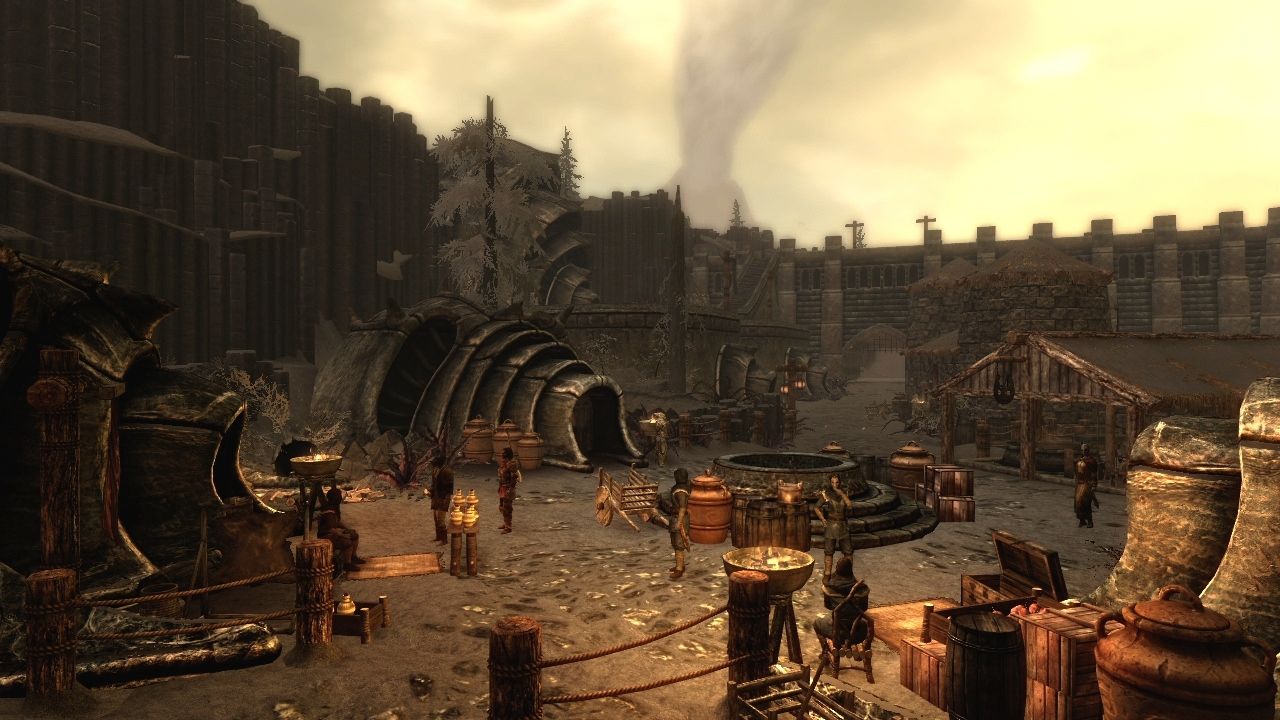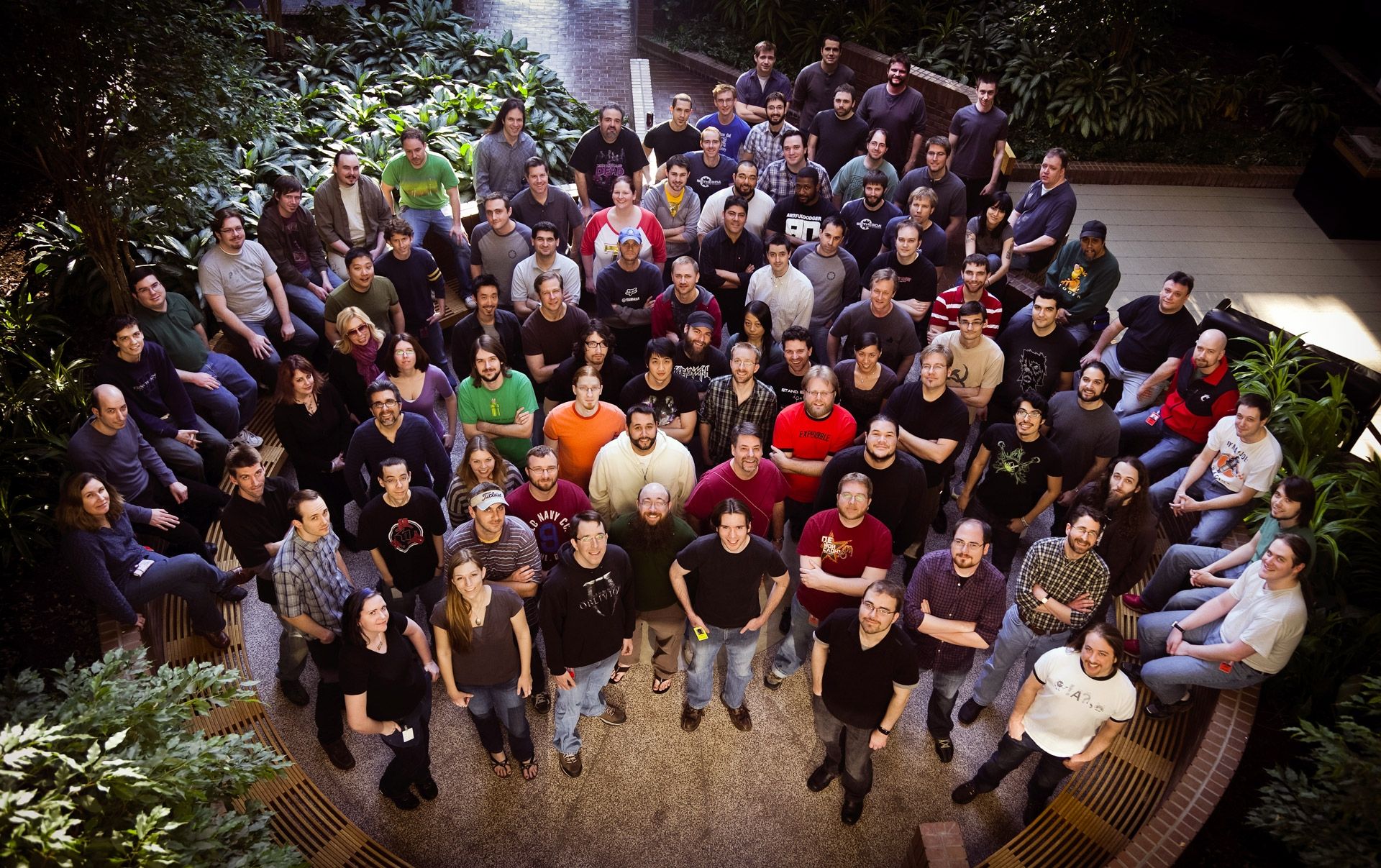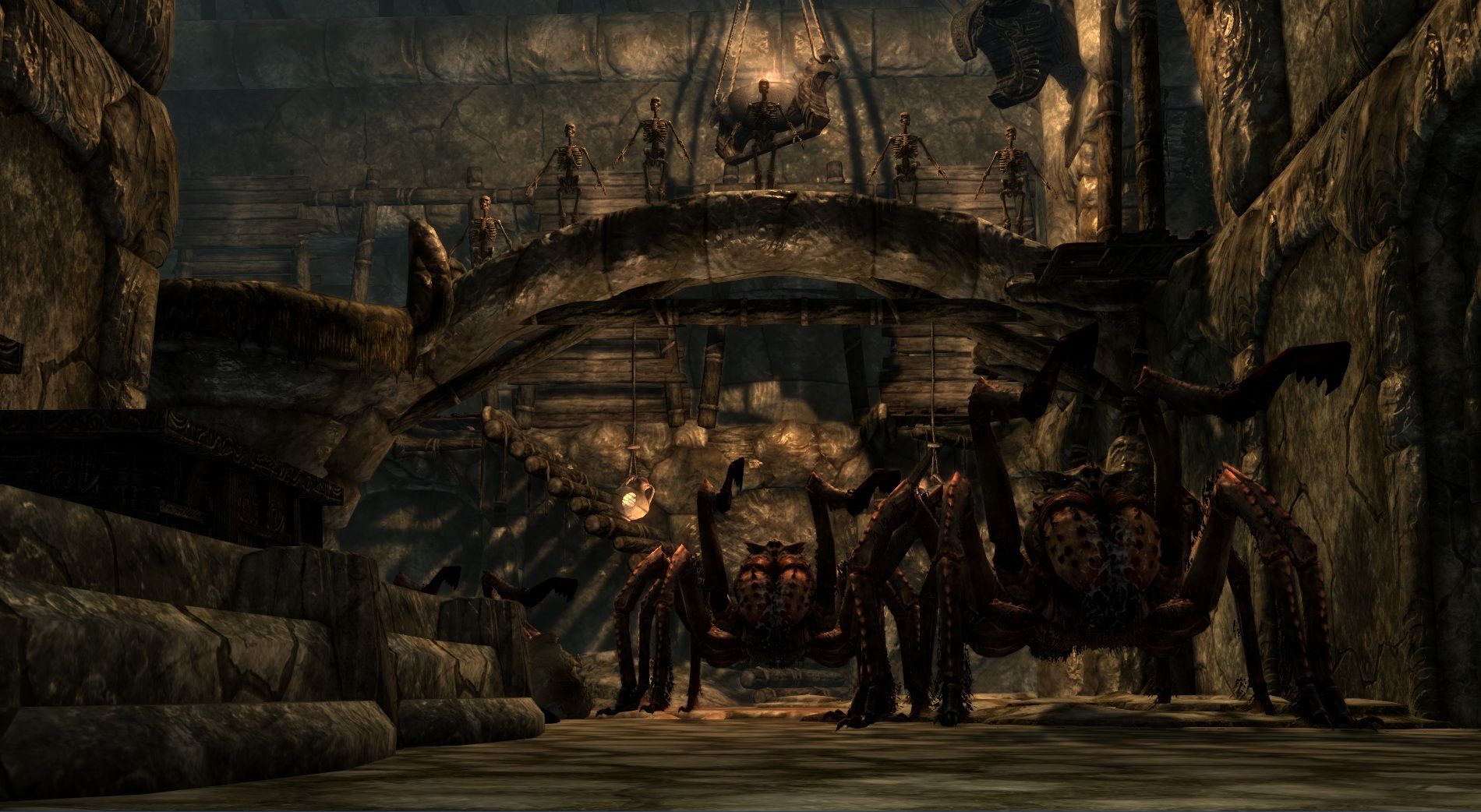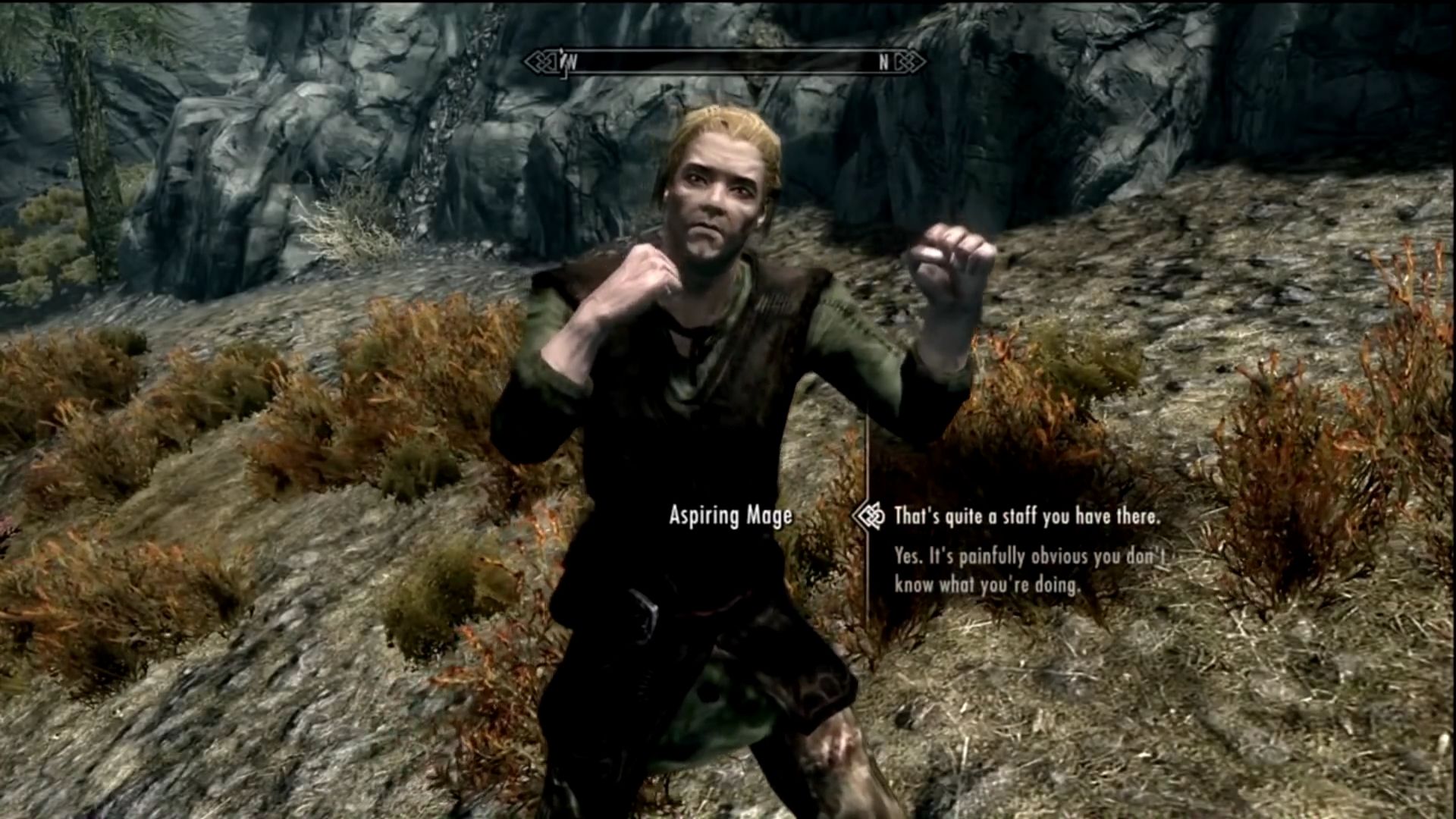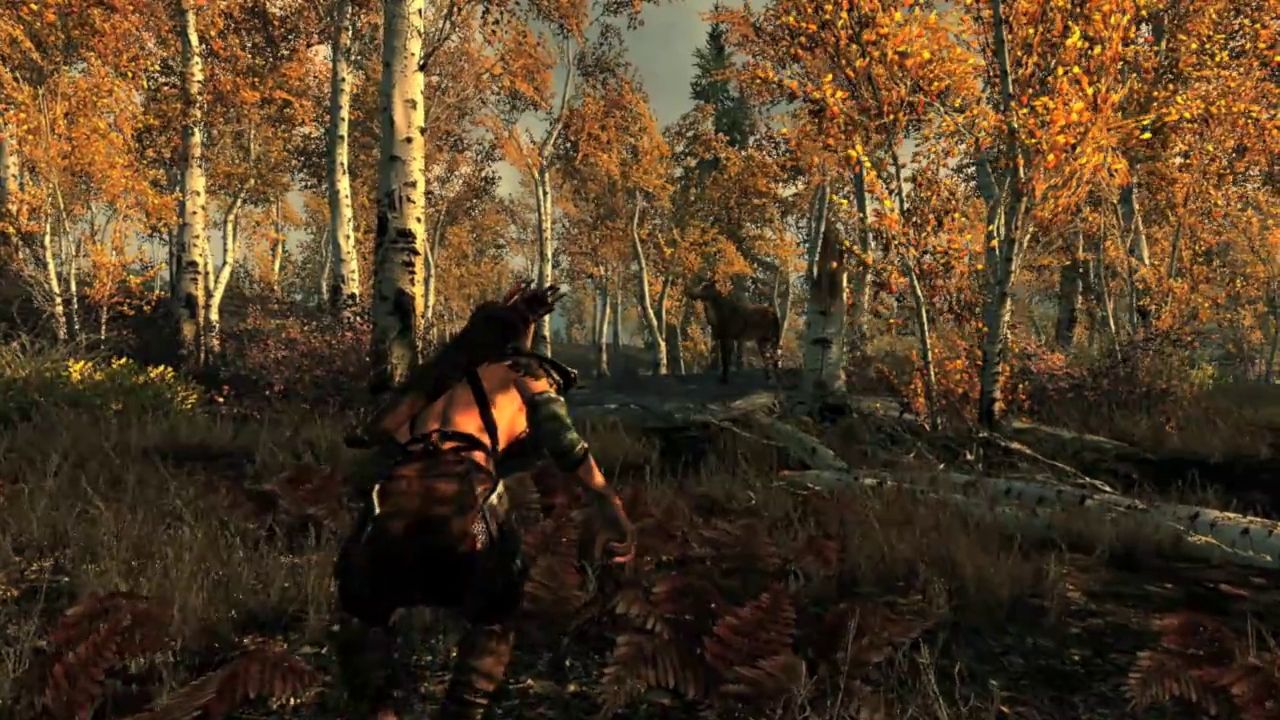You know what, readers? I was wrong. In the past, I've said some pretty harsh things about Skyrim, decrying it as the lesser brother to Oblivion. While I still think Oblivion is a more well-rounded and fleshed out game, Skyrim is pretty stellar too. There's something magical about just wandering through its rugged, foreboding landscapes, and stumbling upon bandits, Forsworn, monsters, or just a beautiful view. Yes, the writing is still shonky Bethesda at its best, and the story could do with a bit more meat on its bones, but the pure variety and intrigue of the world makes for a great experience regardless.
As you can imagine, the development of Skyrim took a long, long time. Essentially, as soon as Bethesda were finished with Oblivion, work got started on its successor. Over those years, the game gained and lost a ridiculous amount of features, ideas, and content until we eventually got to the game that we know and love. Some of this lost content is probably best left by the wayside, but some of it sounds utterly incredible. There was once going to be a bigger civil war, voice recognition, and a whole host of other quests. In this article, we're going to take a deep dive into the development of Skyrim. Whether you're only just starting to play this game for the first time or have been hooked since its release, we're sure you'll learn something you never knew before in this list.
25 It Cost $100 Million
Let's start off with this eye-watering fact. The making of Skyrim cost $100 million to make, making it easily one of the most expensive games ever. While around $85 million of this figure was poured into development, $15 million went on marketing the game, and making it the rip-roaring commercial success it is today. While $100 million is far from chump change, it's still far from challenging for the title of most expensive video game. That honor goes to Modern Warfare 2, which cost $250 million!
24 The Level Design Owes More To Fallout 3 Than Oblivion
When you go back and play Oblivion these days, one thing that jumps out is how samey the dungeons are. Every ruin, however varied in looks, inevitably feels pretty close to the last. What changed in Skyrim? Well, with Fallout 3, Bethesda stopped using what were called "warehouse cells" in dungeon design, instead getting a whole new group of designers in, complete with better tools, that made the dungeons far more varied and interesting than they had been before. This trend carried over to Skyrim, making for the varied dungeons you experience in the frozen north.
23 Dual-Wielding Was Added Late Into Development
When you think of iconic dual-wielding of weaponry in video games, what are the games that spring to mind? I've got two: Halo 2 and Skyrim. While the idea of dual-wielding weapons in first-person RPGs was pretty new when Skyrim pulled it off, it nearly didn't happen at all. According to designers, the feature wasn't in the game for much of development, and was only added after designers argued that it was an important aesthetic choice for the game. This was based on early character sketches, which were a guide to the world's flavor.
22 A VATS-Like System Called Cinekill Was Planned
This is maybe the weirdest cut feature on the list. VATS works in Fallout, because the game evolved from a CRPG, and the combat isn't as up-close and fast paced as in TES. However, having to pause mid-sword slash to target individual body parts would feel just plain odd. The feature was cut somewhere in development, and we think that's probably for the best. Instead, we got the good old fashioned finisher-cam that we all know and love, which can still be plenty brutal depending on the player's skills.
21 Mounts Were Once Going To Play A Much Bigger Role
Beyond the couple of mounts you get for free over the course of Skyrim's quest lines, I pretty much never use them when I play. Steering your horse in Skyrim can often feel more like you've stuck a rudder onto an iceberg than Red Dead 2's reactive horses, so I am very glad indeed that this feature got cut. They were going to be used to carry more of the player's items, but how would that even have worked? Would we just have to take the essentials into dungeons with us, while leaving most of our weapons and potions outside?
20 Certain Features Were Inspired By Assassin's Creed
Assassin's Creed is not the first game that jumps to mind when I think of titles that inspired Skyrim, I'll be honest. Despite this, one important feature really was inspired by Altair/Ezio's shenanigans. This feature is the ability to just take a break from all the epic narratives and chill in a town. Todd Howard described his love of simply sitting on a bench in AC and watching the world go by. As a result, he wanted something similar in Skyrim, which gave birth to the ability to chop wood, or go in an inn and relax.
19 The Dragon's Language Features All Kinds Of Grammatical Complexity
We've come a long way from pitch-shifting Wes Johnson into daedric voices. The language of the dragons was created originally to facilitate the theme song's ancient sound, but spiraled from there. Whenever something new had to be described, a new word was created. Naturally, with vocabulary, came grammar. While it is roughly similar to English grammar, it doesn't have apostrophes, using word fragments to indicate possession. The language also places prepositions early in sentences, while pluralization uses repeating letters. Interestingly, the script appears to have been drawn from the ancient Babylonian language of cuneiform.
18 The Game Has Two Worlds Running Side-By-Side For Ease Of Programming
It's easy to look at Skyrim and think that what you see is what you get. Surely one expansive world is enough, right? Wrong! The AI needs to know how to navigate their way through the world, and as the resolution of the world is simply too high to be used in processing their decisions, a second, simpler world runs alongside it. The AI uses this simpler world for collision detection, allowing them to navigate their way through towns, dungeons, etc., relatively smoothly. I say relatively, because nightmares such as companions wandering into traps do most definitely still happen.
17 Three Simple Rules Guided Development
When it comes to game design, the simplest solution is often the best if you want a slick game. To guide them as they develop blockbuster after blockbuster, Bethesda use just three rules to help them out. Firstly, the game's target experience needs to be defined: in Skyrim, this was to reward players for exploration. Secondly, keep it simple. Todd Howard said they knew they could "do anything," but they couldn't do everything. Finally, "great games are played, not made," meaning that every game put out needs to be vigorously tested and revised accordingly.
16 The Game's World Is About The Same Size As Oblivion's
Now this is something of a dirty little secret of Skyrim's. The game world may feel way more expansive than Oblivion's, but it really isn't. Measuring in at just 14 square miles, it's no bigger at all. Why does it feel that much bigger? Well, in contrast to Oblivion's rolling Tolkienesque meadows, you have rocky crags and huge peaks that stop you simply walking as the crow flies. Compare it to other RPGs, and you get a feel for how tight Skyrim's world actually is. For example, The Witcher 3's world map is a massive 52 square miles in size.
15 Hackers Targeted Bethesda To Try To Make Them Speed Up Production
Cast your mind way back to 2011, and you might remember Lulzsec. A hacker group bent on causing as much chaos as possible, they hacked numerous high-profile targets, including, intriguingly, Bethesda. They hacked their way into the company's network, and stole Brink user data, but didn't release it. They released everything else, however. Their motive for this was simple: they liked Bethesda, and wanted them to speed up production on Skyrim so that they could play it sooner. As motives go, it's not extremely malicious.
14 Over 70 Voice Actors Feature In Skyrim
In comparison to Oblivion or Morrowind's relatively small voice cast, Skyrim features enough to open up a theater company. As well as the world-famous Max von Sydow and Christopher Plummer, there are also a whole host of lesser-known actors taking on the roles of different NPCs around the province. While I long for Patrick Stewart and Wes Johnson to make their returns (or more substantial returns, in the case of Wes,) the vastly improved VA is something every gamer can appreciate. No more does the same person ask you about the Gray Fox every few seconds!
13 Some Skyrim Features Were Created In A Game Jam
If you follow games closely, you'll be aware of the phenomenon of game jams. They're little events where you're given a time limit and have to create a functioning game in that time. At Bethesda, during Skyrim's development, they did things a bit differently. They gave their developers a week, and allowed them to build anything they wanted, as long as it was made in Skyrim. A selection of these were included in the base game, while some, like the werewolf skill tree and rideable dragons, came later, in DLC.
12 Voice Recognition Was Considered For Skyrim VR
If you've ever played Skyrim VR, you'll be aware of how strange it is when it comes to dialog. Instead of simply hitting a button on the controller, you pick floating lines of dialog out of the air, in what is something of an immersion-breaking experience. At one time, voice recognition was under consideration as a possible solution, but was eventually decided against. While a bit of a shame, I can't say that I blame Bethesda. We've seen in the past that voice recognition in video games is dodgy at best, and probably wouldn't have helped with immersion.
11 Porting Skyrim To Xbox One Helped Fallout 4
When you're developing for a new system, one thing that helps is getting experience, and getting it quickly. When it came time to develop Fallout 4 on the Xbox One, porting over Skyrim was a great help in letting them understand how the Xbox One worked with their brand of open-world games. It's understandable: it's way easier to take existing assets and port them over than it is to make all-new ones, on a brand new system. It helps you compare and contrast with the old system, and makes gaining experience far easier.
10 Development On Skyrim Continued Until 2013
It might be tempting to think that development on Skyrim finished in 2012, when Dragonborn came out, but you'd be wrong. Development on the game actually continued until 2013, nearly two years after the game's release. While ports followed, there have been no more DLCs released, and the base game has been left mostly untouched ever since. The key teams at Bethesda moved on to Fallout 4, and now, apparently, The Elder Scrolls 6. While not challenging for Paradox's length of support, that's still very impressive.
9 The Development Team Was Made Up Of 100 People
Unlike the other facts on this list, which are mostly surprising for their large scope, this is pretty impressive for the opposite reason. I would honestly have assumed that the crew was larger, but just 100 people were involved in making one of the best games of recent years. The team was made up of some people who were veterans of the Elder Scrolls series, as well as a bit of fresh blood. This combination was obviously the right one, with the game continuing the Elder Scrolls motifs we know and love while bringing in new ideas.
8 Eight People Made The Dungeons
As well as the earlier dungeon innovations we talked about, something else changed dramatically between Oblivion and Skyrim. Because the team that made Oblivion was about half the size of the one that made Skyrim, designing the dungeons in the earlier title was the responsibility of just one person. When it came to Skyrim, eight people were drafted in: it shows, too! When you look at Oblivion's dungeons, they can get a bit samey, but when eight people are working on them, every single one looks fresh.
7 The Game Contains Over 60,000 Lines Of Dialog
All told, Skyrim's 80 voice actors had to voice over 60,000 lines of dialog across the game and its expansions. That is insane. If you want to have a comparison, Mass Effect, a rich, dialog-heavy game, contains just 20,000. Metal Gear Solid 4 contains 33,000. Even Baldur's Gate II, that wordy, insanely lengthy CRPG of old, contains just 57,000. The resulting script is a massive bulk of pages, each one with dialog that is definitely improved from Oblivion's. It may not be the longest script ever, but that's still darn impressive.
6 A New Engine Was Built For The Game
When Skyrim was first being designed, some people assumed it would use the same engine as Oblivion, Gamebryo. However, this engine just couldn't support what the developers wanted to do in Skyrim, and as such, the code was forked, and a new engine began development. This would eventually become the Creation Engine, which is still being used by Bethesda. Features of this engine included better animations, better AI, radiant quests, and a new foliage rendering system, instead of Speedtree, as used in Gamebryo.

